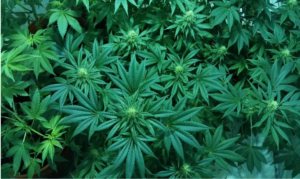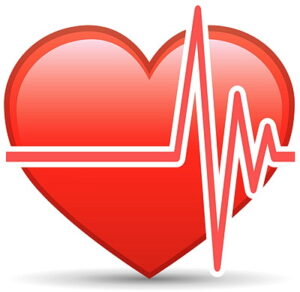The legalization of marijuana in the United States has been a hot topic for quite some time. 32 states now have legal medical marijuana programs. Even in the wave of statewide legalization sweeping most parts of the US, the federal government is adamant about maintaining the status of pot alongside dangerous addictive drugs such as cocaine and MDMA.
If we put the debate on recreational marijuana aside, the support for medical marijuana (MMJ) is increasing gratefully. In many state-administered varsities, marijuana is being researched and studied as a potent medical substance. Interestingly, many studies have vindicated the stance of MMJ legalization.
In the latest study, it has been found that the use of this plant might be linked to a high sperm count. Amid many encouraging signs showing the therapeutic and health benefits of marijuana, it is important to refrain from giving sweeping statements regarding its medical criteria.
Although there are proponents for legalizing marijuana, their reasoning is essentially based upon financial and judicial reasons with some credit towards its medical use, but the research in its favor has overshadowed the long-established studies regarding the harmful implication of pot usage overall. So let’s take a look at the health risks that are associated with the use of smoking the marijuana plant, but before we do, we promised we’d tell you who said that he didn’t inhale it – our 42nd president of the United States – Bill Clinton.
Effects of Marijuana Use on Mental Health
In many statewide MMJ programs, it is now recognized as the legitimate treatment for some mental health issues. For instance, Post-traumatic Stress Disorder is one of the qualifying conditions in most of the statewide MMJ programs, but it is important to mention that marijuana extracts in the form of CBD oils are effective against some mental health conditions, including PTSD patients, but the research for CBD as a cureall or even as help for many other claimed health issues is hardly conclusive.

Pot plants are laden with hundreds of cannabinoids (receptors, located throughout the body, which are involved in a variety of physiological processes including appetite, pain-sensation, mood, and memory), but one thing is clear; although the CBD extract may have some promising benefits, the cannabis extract that is considered detrimental to your health is Delta-9 tetrahydrocannabinol (THC). This substance can have significant consequences on the mental health of people who consume weed on a regular basis.
It has been extensively studied that THC binds with cannabinoid receptors present in nerve cells and disrupts their regular function. The nerve cells affected by exposure to THC are responsible for many cognitive functions. Smoking weed and getting ‘high’ is the result of the psychoactive effect of THC. Many brain activities like pleasure, critical thinking, time and distance perception, and body coordination can get affected by heavy marijuana use. People who regularly consume pot are not able to act normally under its influence and can ultimately become dependent on its use. Their brain cells actually adapt to the stimulation of THC and only work well in its presence.

One case of distance perception inhibition was a college student who was driving on the FDR Drive in Manhattan, which is the roadway that runs along the East River. It was a rainy night and the student was heading south as his passenger friends were puffing away on their weed. The driver saw what looked like a stalled car up ahead that looked liked it was stopped, but he got distracted and turned away for a second. When his eyes hit the road again, the car was smack in front of them. The student slammed on the brake and came within a few feet away from the stalled car before his car came to a stop.
What made matters worse was that there were two men removing the spare tire from their trunk and were between his car and theirs. No doubt they would have been killed had the student not reacted when he did, but he should have reacted sooner. He didn’t realize how close he was to that car until it was almost too late.
Aside from the fact that these two men were apparently not the sharpest knives in the tray because every New Yorker knows to never change a tire on the FDR Drive (there is no shoulder), they are lucky to be alive, but the student was quite shaken up and vowed never to touch the stuff again. The latest information is that he has been sticking to his vow.
So we are saying not to avoid marijuana if it is legal in your state, but same as driving while drunk – DON’T DO IT!
Effects of Marijuana on Cardiac Health

The use of marijuana entails an immediate upsurge in heart rate. A person can experience a 60% hike in heart rhythm within a couple of minutes. Increased heart rate in the absence of enduring physical activity is itself a problem.
But marijuana’s detrimental effect doesn’t just stop there. While drastically increasing the heart rate, it also causes a relatively quick drop in blood pressure. And severe drop in blood pressure is no doubt unhealthy. According to medical research, this lethal combination of the two different cardiac conditions increases the chances of a heart attack four-fold.
It is important to mention that the study was primarily done on healthy individuals. Just imagine what it can to to people who are already suffering from a cardiovascular issue are more prone and vulnerable to the dangers associated with smoking week.
Detrimental effects of marijuana on the Musculoskeletal System
 Longtime use of marijuana can affect the musculoskeletal system as well. Researchers at The University of Edinburgh, UK have found out that people who regularly use marijuana experience deterioration of bone density that disturbs their BMI. They also found out that it can lead to the development of the chronic condition of Osteoporosis in the later stages of life.
Longtime use of marijuana can affect the musculoskeletal system as well. Researchers at The University of Edinburgh, UK have found out that people who regularly use marijuana experience deterioration of bone density that disturbs their BMI. They also found out that it can lead to the development of the chronic condition of Osteoporosis in the later stages of life.
Scientists are still working on finding out the exact reason why marijuana consumption has a detrimental effect on bone density and whether it’s a direct or indirect impact.
Marijuana Consumption, Lungs and Cancer
Marijuana can be consumed in multiple ways. Many people use it in the form of oil extracted from its flowers and buds. Then there are people who make edible products out of it. However, the most popular way to consume it is to smoke it.
More than 90% of people who consume weed for recreational reasons smoke it. This makes use of cannabis as harmful as tobacco smoking since both involve inhalation of carcinogens in the form of tar and other detrimental hydrocarbons. Apart from damaging the health of the respiratory system, the continuous use of marijuana also increases the risk of lung and oral cancer.
Marijuana Smoke Can be More Dangerous than Tobacco Smoke
In principle, marijuana and tobacco smoke have the same detrimental effects. However, the way marijuana is usually smoked makes it more dangerous.
-
- Unlike cigarettes, pot is often smoked without filters, which increases the content of combustion byproducts in the smoke.
-
- People hold marijuana smoke in their lungs for longer in comparison to cigarettes. This means the entire respiratory system remains exposed to harmful substances for a longer time.
Effects of Marijuana During Pregnancy
 Several research studies have shown that the use of marijuana by women during pregnancy can affect the cognitive development of the child in the womb. Newborn children can face many problems throughout life due to marijuana consumption by mothers during pregnancy.
Several research studies have shown that the use of marijuana by women during pregnancy can affect the cognitive development of the child in the womb. Newborn children can face many problems throughout life due to marijuana consumption by mothers during pregnancy.
Some unsubstantiated studies also show that the use of marijuana can lead to a reduced capacity of the immune system to fight diseases. Inconclusive studies also indicate marijuana users are more susceptible to developing head and neck cancers in comparison to non-users.
Conclusion
The above discussion clearly shows that using marijuana has never been healthy. It can be used in certain medical conditions where its benefits outweigh the risks; however, is important to mention that marijuana products for medical uses must be free of the psychoactive substance THC.
The discussion has also established that the habitual use of the whole marijuana plant is the recipe for many medical issues. Don’t go for self-medication with marijuana. Always consult physicians who are licensed to recommend marijuana-based products.
No wonder Bill Clinton didn’t inhale!


 The relationship between medical cannabis and psychosis is a heated issue. Despite the fact that many research studies have been conducted on how cannabis affects the human brain and if the drug can be used to treat or manage certain mental health issues, scientists have been unable to reach a definitive conclusion. This is mainly because the research studies have provided mixed results.
The relationship between medical cannabis and psychosis is a heated issue. Despite the fact that many research studies have been conducted on how cannabis affects the human brain and if the drug can be used to treat or manage certain mental health issues, scientists have been unable to reach a definitive conclusion. This is mainly because the research studies have provided mixed results.

